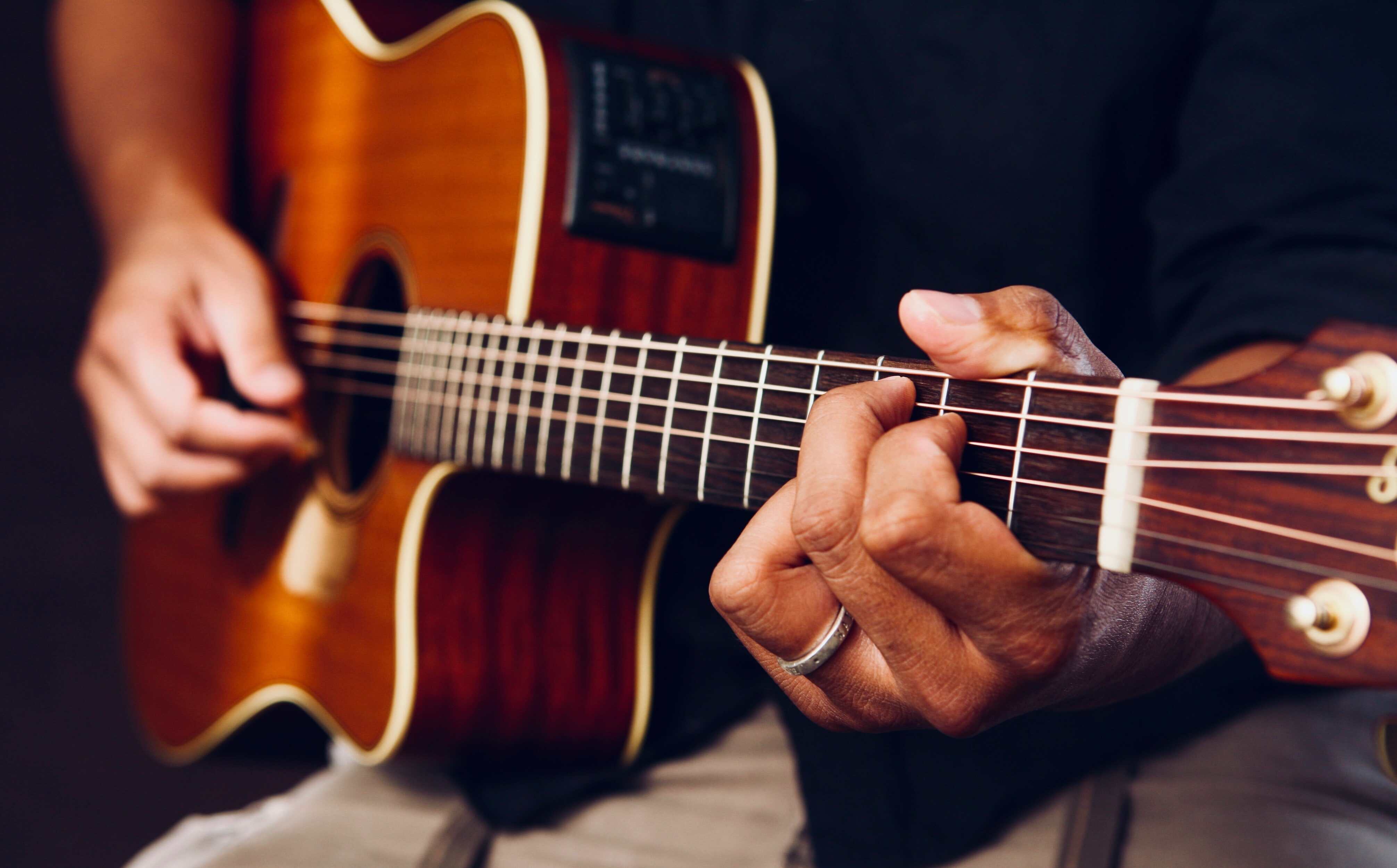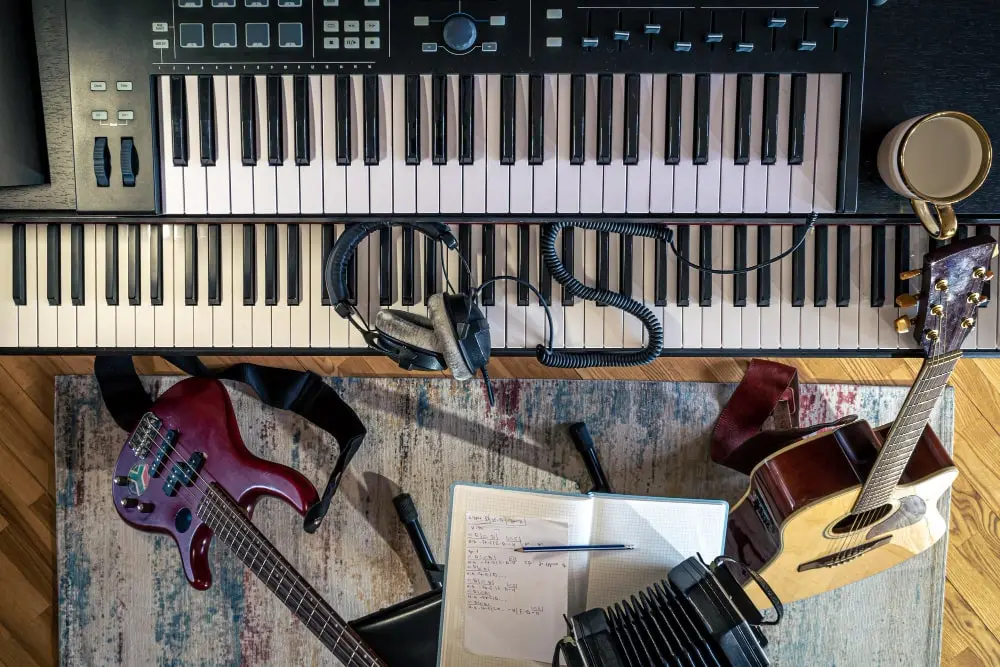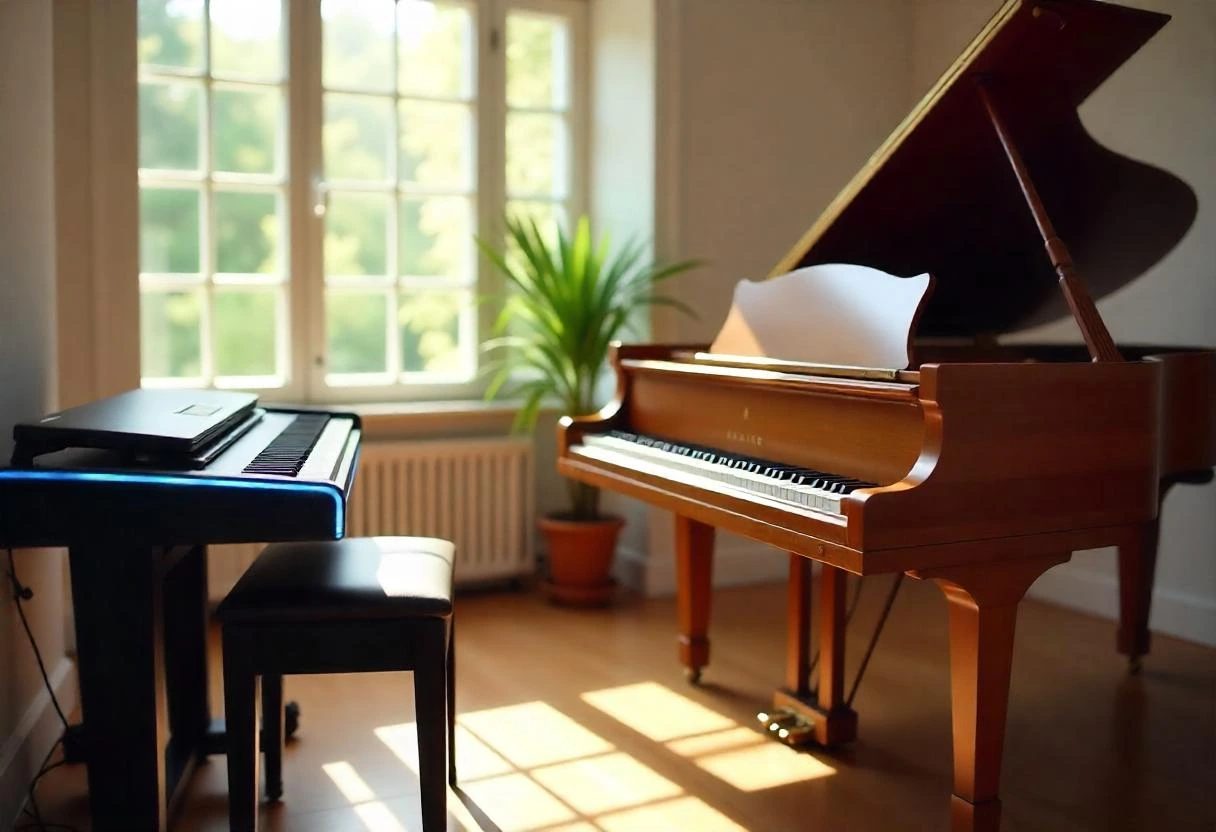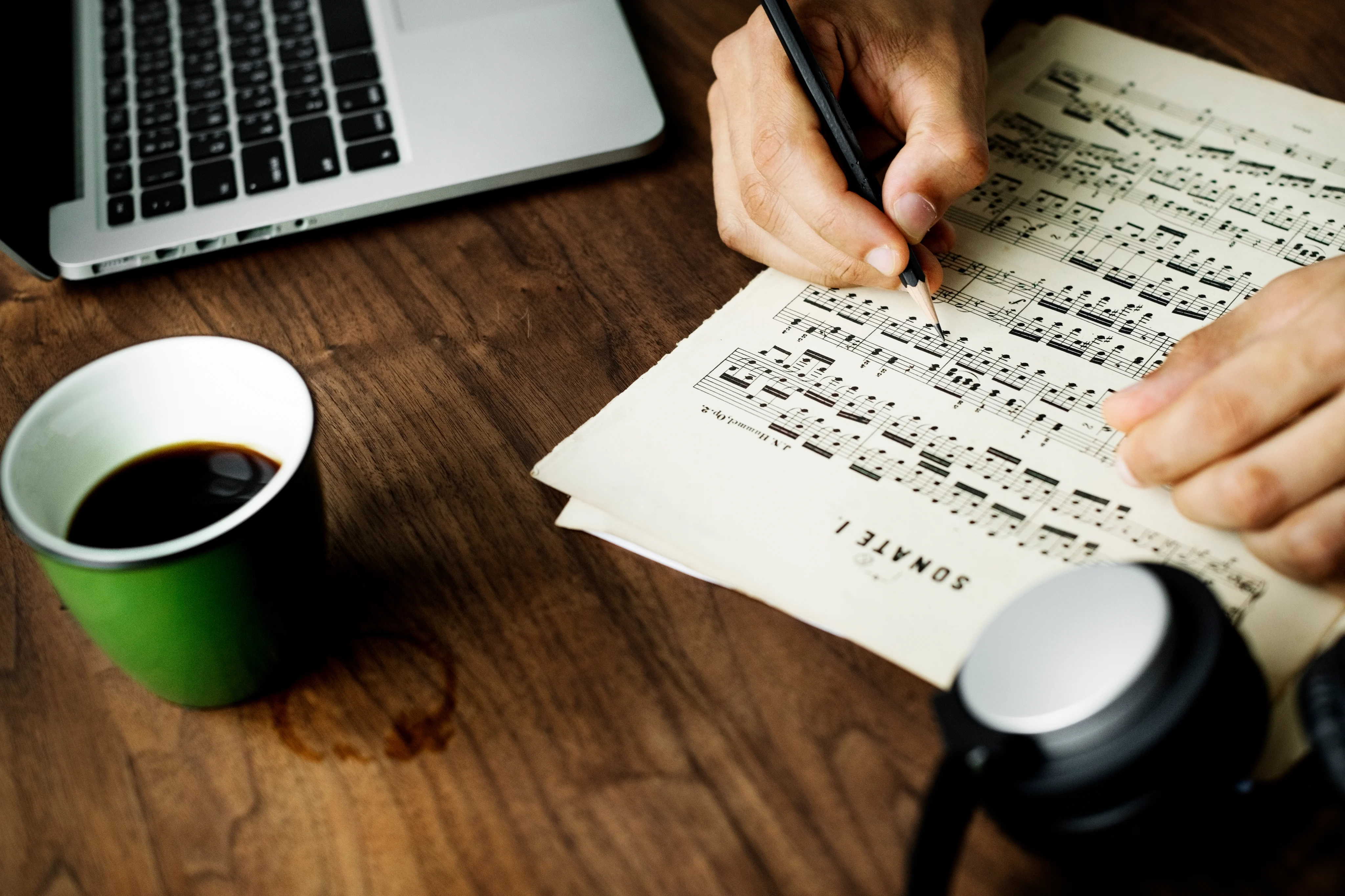Introduction
You would have heard one of the most well-known instrumental heartbeat music from the film Kal Ho Na Ho! The captivating music has the ability to touch the hearts of millions of people worldwide. But did you know which instrument was used to make it worthwhile to listen to? It was none other than the Piano – the king of all instruments. Do you feel the urge to start learning piano? If yes, your next step would be to search for piano classes online. Before you do that, let’s see what are piano chords and what are the basic tips to play the piano.
What are piano chords?
A chord is formed when more than one note is played simultaneously. If you are new to this, it can be intimidating to play piano chords for beginners. As you sit there, you find it difficult to make sense of the various keys spread out in front of you in a black-and-white pattern.
It is understandable that learning piano has a lot to do and learn and being a beginner, you might find things way more difficult. Without wasting any minute, let us straightaway jump on these basic tips that could be helpful to learn piano chords.
Want to learn how to play keyboards or how to play chords on piano? Let’s get started:
- Get comfortable using the keyboard:
You cannot perform with your dancing shoes on until and unless you are comfortable wearing them. The same goes for any and every activity that you plan to do. You can only get well-versed in learning the keyboard once you start getting comfortable with the keys. All these black-and-white keys can be confusing but trying to learn with time will surely benefit you.
These are some simple points to be kept in mind:
- Left of two black notes is C
- Right of two black notes is E
- Left of three black notes is F
- Right of three black notes is B
- Numbering your fingers will help:
Notes make up your piano. The pitch of the sound that emerges from the instrument you are playing is represented by a note. Finger numbering comes next. Once you can play pieces, it will be crucial to choose which note to play with which finger. Fingers can hop, reach, cross over, and tuck their thumbs under the keyboard. Many students develop unthinkable finger agility as they move forward with learning guitar.
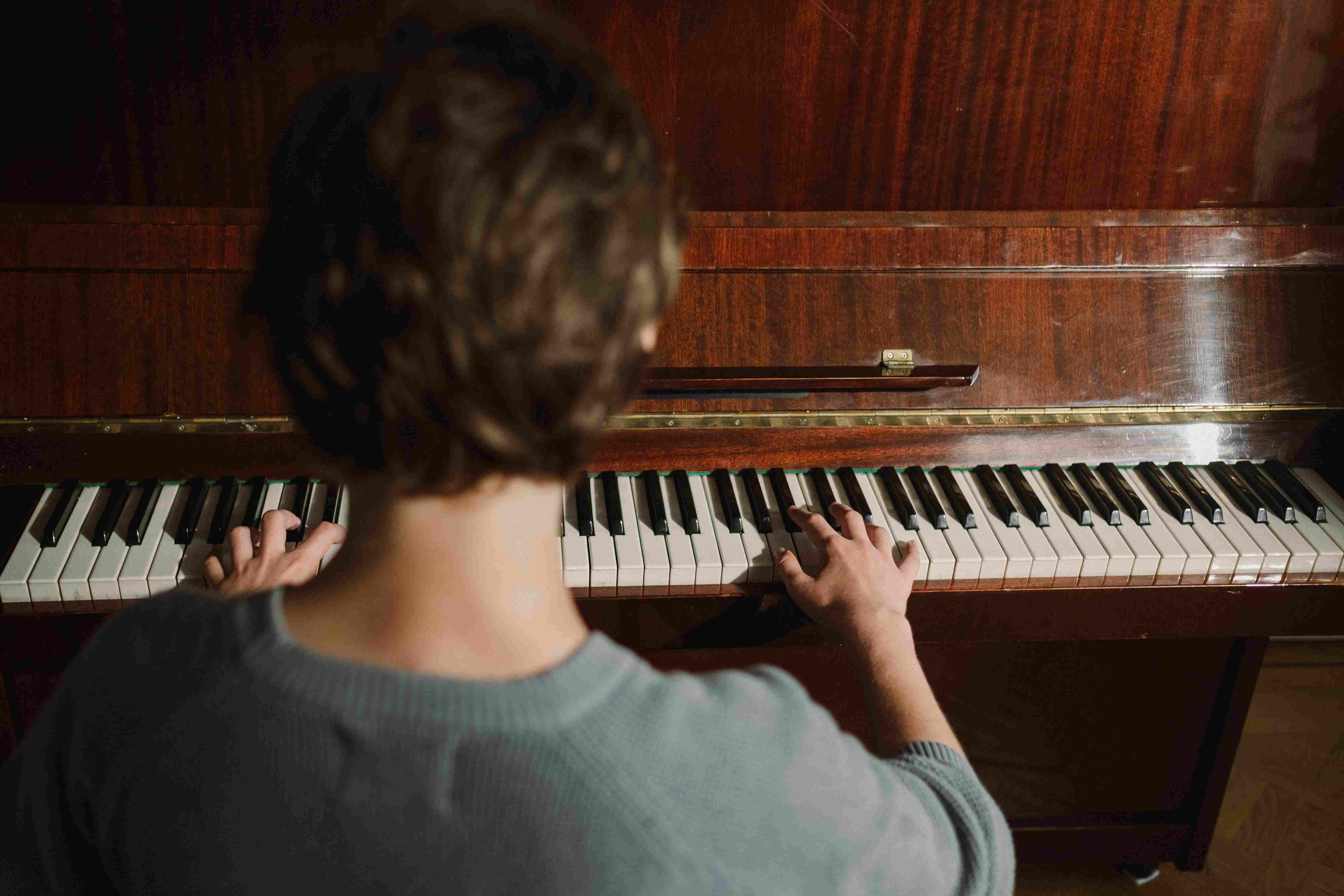
- Position your hands well:
You cannot simply sit and start playing the piano with an incorrect posture. Moreover doing this won’t benefit you and your back. If you adopt an incorrect position, you risk suffering severe hand, wrist, and forearm damage. You can compare the appropriate hand placement. Your hand should be in a semicircle position on the keys. Maintain a level hand with the ground and do not lower the wrist. Make sure your wrist should be very loose.
- Focus on the C major scale – part 1:
A scale is a group of notes in pitch and fundamental frequency order. The easiest and most popular scale is C major. The notes of a C major scale are C, D, E, F, G, A, B, and C. Initially you can start to practice learning the scale with your right hand.
There are three tasks that you can look after while working on this step. They are as follows:
- Find C on the keyboard which is placed to the left of the two black notes
- Place finger 1 on C , 2 on D and finger 3 on E by using your right hand
- Playing each note separately. With regular practise you can start increasing your speed
- Focus on the C major scale – part 2:
You have so far used the C major scale and the notes C, D, and E. F, G, A, B, and C are the remaining notes to be added to this. On the note E, we used finger 3 to end the first half. The following note is F, which is the white note that is located to the left of the three black keys. The best move in this situation is to play F with finger 1, which is your thumb.
Just like the above step there are 4 tasks mentioned:
- Simply place your thumb between your three fingers and the letter F, as shown below
- Play G next with finger 2, A next with finger 3, B next with finger 4, and C last with finger 5
- Play each note up and down, up and down, for a few seconds. Increase your speed as your confidence grows
- Combine the scale’s two halves, practicing until you get it right
Conclusion
Learning musical instruments is enjoyable, and you can enjoy the process with us at Artium Academy. The best part about us is that our music instrument classes offer the best online Indian music learning experience. Get, set, go and book a free trial to kickstart your music journey!


